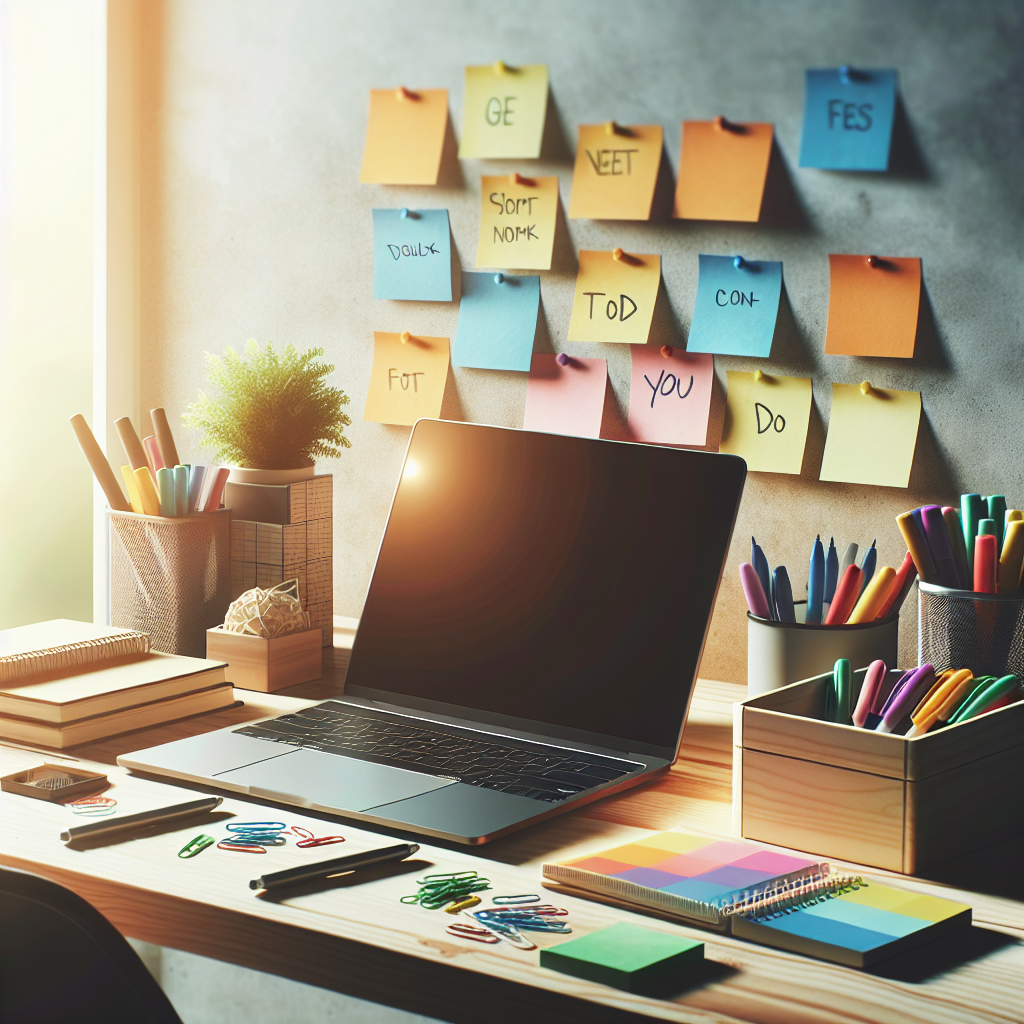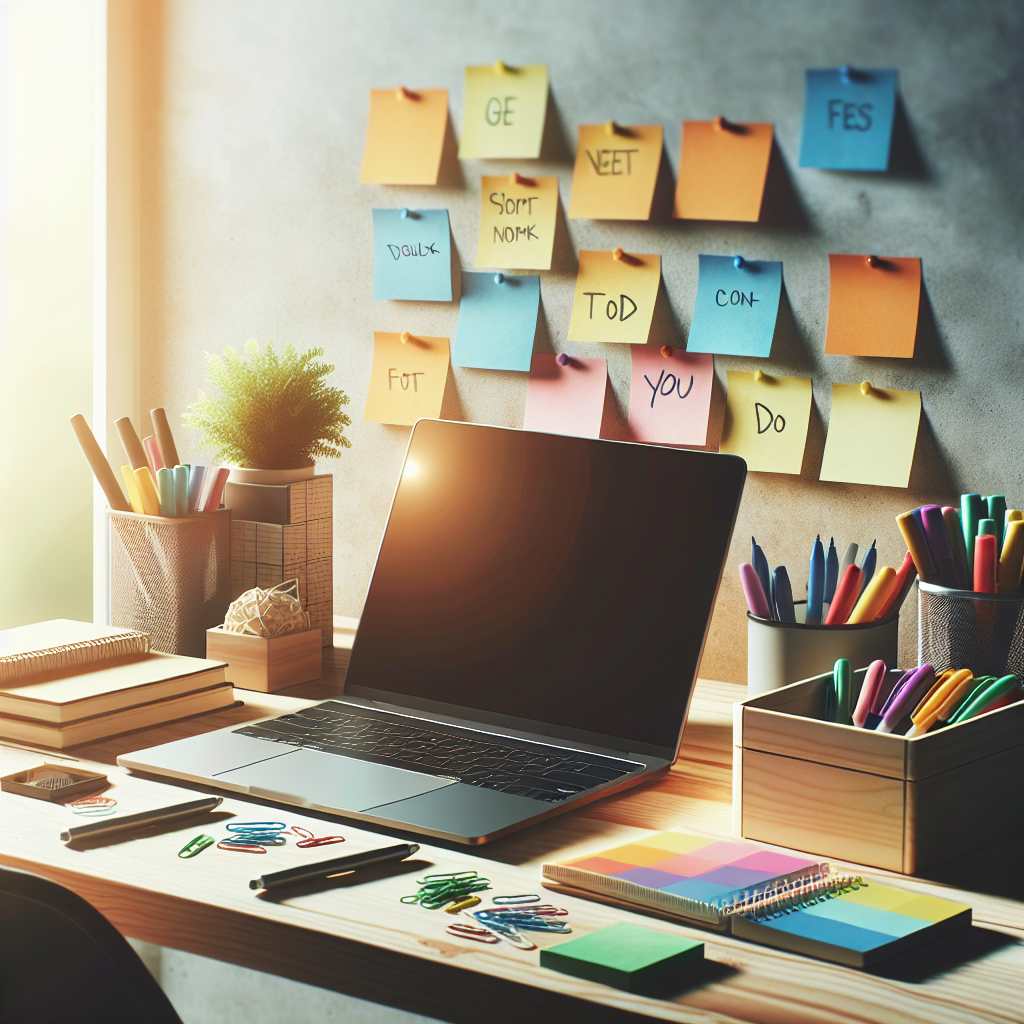Working from home can be both a blessing and a challenge. With the comfort of your own space and the flexibility to set your own schedule, it’s easy to get distracted and lose focus. However, by implementing a few simple strategies, you can improve your concentration and focus in a work from home environment. In this article, we will explore practical tips and techniques that will help you stay on track and achieve your best work, all while enjoying the perks of working from the comfort of your own home.

Establishing a Dedicated Workspace
Working from home can be a great opportunity to create a personalized and efficient workspace tailored to your needs. By dedicating a specific area for work, you can minimize distractions and create an environment conducive to productivity.
Creating a Quiet and Distraction-Free Area
When setting up your dedicated workspace, it is important to find a quiet area in your home where you can focus without interruptions. Choose a location away from high-traffic areas or noisy appliances. If possible, use a room with a door to close off the space and minimize distractions from other household members.
Organizing Your Work Materials and Tools
To enhance your productivity, it is essential to organize your work materials and tools. Keep your desk tidy by utilizing storage solutions such as drawers, shelves, or file organizers. Having easy access to necessary work items will help you stay focused and avoid wasting time searching for things.
Finding Optimal Furniture and Lighting
Investing in comfortable and ergonomic furniture can make a significant difference in your work-from-home experience. Ensure that your chair provides adequate support for your posture, and your desk is at the right height for your typing and writing needs. Additionally, prioritize natural light and position your workspace near a window if possible. If natural light is limited, invest in good lighting to reduce eye strain and fatigue.
Setting Clear Work Boundaries
One of the challenges of working from home is maintaining a clear separation between work and personal life. By establishing clear work boundaries, you can prevent work from intruding into your personal time and vice versa.
Establishing a Daily Schedule and Routine
Having a consistent daily schedule and routine can help create a sense of structure and improve time management. Set specific work hours and stick to them as much as possible. Start your day by planning out tasks and goals, and allocate time for breaks and personal activities to maintain a healthy work-life balance.
Communicating Availability to Others
Make sure to communicate your availability and work hours to family members or roommates to avoid interruptions or misunderstandings. Consider establishing signals or systems to indicate when you should not be disturbed, such as a closed door or a do-not-disturb sign. Open and honest communication can help others respect your boundaries.
Minimizing Personal Interruptions
While it is essential to communicate your availability to others, it is equally crucial to minimize personal interruptions during work hours. Limit the time spent on non-work-related activities, such as personal phone calls or household chores, to maintain focus and productivity. Designate specific breaks for personal tasks and try to save personal activities for after your workday is complete.
Eliminating Digital Distractions
In our increasingly digital world, it’s easy to get distracted by various online activities. By implementing strategies to eliminate digital distractions, you can enhance your concentration and focus on your work tasks.
Organizing and Streamlining Digital Files
Digital clutter can hinder productivity and create unnecessary distractions. Take time to organize and declutter your digital files, creating clear and intuitive folders and naming conventions. Regularly delete and archive files that are no longer needed to keep your digital workspace clean and efficient.
Utilizing Time-Management Apps and Tools
There are numerous time-management apps and tools available that can help you stay focused and manage your tasks effectively. Consider using applications that help track your time, set reminders and deadlines, or block distracting websites or notifications. Experiment with different tools to find the ones that work best for your workflow and preferences.
Temporarily Disconnecting from Social Media
Social media can be a significant source of distraction and can quickly derail your productivity. Consider temporarily disabling notifications or using website-blocking extensions during your work hours. By taking a break from social media, you can minimize temptation and maintain your focus on work-related activities.

Implementing Mindfulness Practices
Practicing mindfulness can greatly contribute to your overall well-being and concentration. By incorporating simple mindfulness techniques into your work-from-home routine, you can reduce stress, improve focus, and enhance your ability to stay present and engaged.
Practicing Meditation and Deep Breathing Techniques
Taking short breaks throughout the day to practice meditation or deep breathing techniques can help clear your mind and increase your focus. Find a quiet space, sit comfortably, and take a few moments to focus on your breath. Allow yourself to let go of any racing thoughts and return to your work with a renewed sense of calm and clarity.
Engaging in Regular Exercise and Stretching
Physical activity is not only beneficial for your physical health but also plays a crucial role in improving concentration and focus. Incorporate regular exercise or stretching breaks into your work-from-home routine. This can be as simple as a short walk, a set of stretching exercises, or even following an online workout video.
Taking Short Breaks to Relax and Recharge
While it may seem counterintuitive, taking short breaks throughout your workday can actually improve your concentration and productivity. Set aside a few minutes every hour to relax, step away from your workspace, and engage in a non-work-related activity. This can help prevent mental fatigue and give your brain a chance to recharge.
Creating a Healthy Work-Life Balance
Maintaining a healthy work-life balance is essential for your overall well-being and long-term success. While working from home, it is crucial to establish clear boundaries and prioritize activities that contribute to your personal fulfillment.
Establishing Clear Work and Personal Time
Clearly defining your work and personal time will help prevent work from overtaking your personal life. Set specific start and end times for your workday and commit to sticking to them. When your work hours are complete, prioritize personal activities and avoid the temptation to continue working late into the evening.
Prioritizing Self-Care Activities
Self-care activities play a vital role in maintaining your physical and mental well-being. Incorporate activities that help you relax and recharge, such as reading, practicing a hobby, or spending time outdoors. By prioritizing self-care, you will be better equipped to handle the demands of work and maintain a positive mindset.
Setting Realistic Expectations
In the work-from-home setting, it is important to set realistic expectations for yourself. Understand that you may not be able to accomplish everything in a single day, and that is okay. Establish clear goals and prioritize tasks based on their importance. By setting realistic expectations, you can avoid feeling overwhelmed and maintain a sense of accomplishment.
Utilizing Productivity Techniques
There are various productivity techniques that can help you maximize your efficiency and focus. By implementing proven strategies, you can optimize your workflow and ensure that tasks are completed in a timely manner.
Using the Pomodoro Technique for Time Management
The Pomodoro Technique is a time-management strategy that involves breaking your work into 25-minute intervals, called pomodoros, followed by short breaks. Set a timer for 25 minutes and solely focus on a task until the timer goes off. Take a short break, then repeat the process. This technique can increase your productivity by allowing focused work periods and preventing burnout.
Employing the Eisenhower Matrix for Prioritization
The Eisenhower Matrix, also known as the Urgent-Important Matrix, is a tool for prioritizing tasks based on their urgency and importance. Divide your tasks into four categories: urgent and important, important but not urgent, urgent but not important, and neither urgent nor important. By categorizing your tasks, you can identify priorities and allocate your time and energy more effectively.
Utilizing Task Lists and Planners
Task lists and planners are invaluable tools for organization and time management. Write down your daily to-do list to provide structure and visualize your tasks. Break larger projects into smaller, actionable steps and track your progress as you complete each task. Finding a task management system that works for you will help you stay organized and focused.
Maintaining Social Connection and Collaboration
Working from home can sometimes feel isolating, but it is important to maintain social connections and build strong working relationships. By actively seeking collaboration and interaction with colleagues, you can enhance your work experience.
Scheduling Virtual Hangouts with Colleagues
Arrange virtual hangouts with your colleagues to foster social connections and a sense of camaraderie. This could be a casual video chat, virtual coffee break, or even a team-building activity. By engaging with others in a relaxed and social setting, you can strengthen relationships and combat feelings of isolation.
Engaging in Regular Team Meetings
Regular team meetings are essential for effective communication and collaboration. Schedule virtual meetings to discuss updates, coordinate projects, and address any challenges or questions. Clear and consistent communication with your team will help you stay aligned and maintain a sense of belonging.
Utilizing Collaboration Tools and Platforms
Utilize collaboration tools and platforms to facilitate teamwork and efficient communication. Virtual project management tools, document sharing platforms, and instant messaging applications can streamline collaboration and keep everyone connected. Explore different tools to find the ones that best suit your team’s unique needs.
Optimizing Physical Well-being
Physical well-being is closely linked to mental focus and productivity. By prioritizing your physical health, you can create a foundation for optimal performance while working from home.
Ergonomics: Setting Up Proper Posture and Equipment
Maintaining good posture while working is crucial for preventing discomfort and musculoskeletal issues. Position your chair at a height that allows your feet to touch the ground and keeps your knees at a 90-degree angle. Ensure that your computer screen is at eye level to avoid straining your neck. Invest in an ergonomic keyboard and mouse to reduce the risk of repetitive strain injuries.
Creating a Comfortable and Healthy Work Environment
Design your workspace to be comfortable and promote productivity. Choose a chair that provides adequate support, and add cushions or a standing mat if necessary. Consider incorporating plants or artwork to create a visually appealing and calming atmosphere. Maintain a comfortable room temperature and good air circulation to enhance your comfort and focus.
Maintaining Hydration and Healthy Snacking
Proper hydration and nutrition are key to maintaining energy levels and mental clarity. Keep a water bottle nearby and make an effort to drink water throughout the day. Avoid excessive caffeine or sugary drinks, as they can lead to crashes and decreased focus. Opt for healthy snacks, such as fruits, nuts, or granola bars, to fuel your body and brain.
Seeking Support and Accountability
Working from home can sometimes feel challenging, and it’s important to seek support and accountability when needed. By connecting with others and actively seeking assistance, you can overcome obstacles and stay motivated.
Joining Virtual Co-working Groups or Communities
Virtual co-working groups or communities can provide a sense of camaraderie and accountability. Join online communities or platforms where professionals gather to work together virtually. Sharing your goals, progress, and challenges with others can help you stay motivated and connected.
Engaging in Accountability Partnerships
Consider partnering with a colleague or friend to establish an accountability partnership. Regularly check in with each other, share goals, and offer support and encouragement. Having someone to hold you accountable can increase your motivation and help you stay on track with your work tasks.
Seeking Professional Assistance if Needed
If you find that you are struggling to maintain focus and productivity despite your best efforts, consider seeking professional assistance. Reach out to a coach, therapist, or productivity specialist who can provide guidance and support tailored to your specific needs. Recognizing when you need help and actively seeking it is a sign of strength and self-awareness.
Adapting to and Embracing Change
Flexibility and adaptability are essential skills in a work-from-home environment. Embrace change, stay open-minded, and continuously seek new ways to improve your workflow and well-being.
Remaining Adaptable to Shifting Work Demands
Recognize that work demands and priorities may change over time. Be open to adjusting your strategies and workflow to accommodate new projects, deadlines, or team dynamics. Embracing a flexible mindset will allow you to navigate changes smoothly and maintain your productivity.
Embracing New Technologies and Tools
The modern work landscape is constantly evolving, and new technologies and tools are continuously emerging. Embrace these advancements and seek opportunities to learn and leverage them in your work-from-home routine. By staying up-to-date with the latest tools and technologies, you can streamline your work processes and stay competitive.
Developing a Growth Mindset
Embrace the mindset of continuous growth and improvement. View challenges and setbacks as learning opportunities rather than failures. Identify areas for personal and professional development and seek opportunities to enhance your skills and knowledge. Cultivating a growth mindset will enable you to adapt to changes and thrive in any work environment.
In conclusion, establishing a dedicated workspace, setting clear work boundaries, eliminating digital distractions, implementing mindfulness practices, creating a healthy work-life balance, utilizing productivity techniques, maintaining social connection and collaboration, optimizing physical well-being, seeking support and accountability, and adapting to change are all key considerations for improving concentration and focus in a work-from-home environment. By implementing these strategies and prioritizing your well-being, you can create a productive and fulfilling work experience from the comfort of your home.
